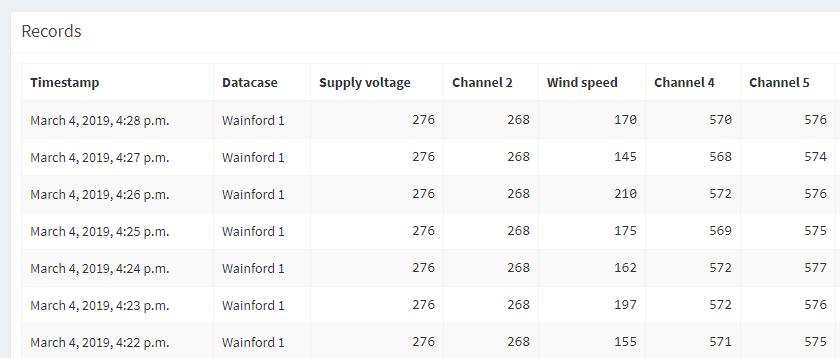It always seems to blow a gale on the top floor of our building up here in Suffolk, so, in the honourable pursuit of data, we climbed up on the roof and rigged up a wind speed anemometer and a wind vane.
Our anemometer is a simple unit made by Inspeed which I had knocking around in the shed. It works with an arrangement of a magnet and something called a reed switch, and every time it spins around it sends a tiny pulse down the wire to the Datacase logger. You’ll find reed switches all over the place, such as on burglar alarm door sensors and bicycle speedometers. Wikpedia tells me that reed switches were invented at the Bell Telephone Laboratories in 1936 by W.B. Ellwood. But I’m getting distracted.
Anyway, the two wires from the reed switch are connected up to the special pulse-counting channel on Datacase and the ground terminal (it doesn’t actually matter which way around). The Datacase counts up those pulses which equate to rotations per minute of our anemometer. Just now that was about 170 times:

Then, all we do is add a transformation formula into the Datacase app to convert the pulses into a more meaningful unit: in this case, metres/second. The transformation formula for our particular anemometer is pulses/60+0.32*0.8669. Yours might be different and hopefully it’ll tell you in the manufacturer’s instructions. Or maybe if you are smarter than me you can work it out.

And there we have it. A nice live chart showing the wind speed atop our building in metres per second.
Now on to wind direction.
We also have a wind vane up there. Its nose is designed to point into the oncoming wind, and the whole vane rotates on something called a potentiometer. That’s the same sort of thing you’ll find behind any volume control knob on your stereo or radio. Potentiometers are a kind of resistor, and suffice to say that they’ll give you a different reading depending on the position that turned around to.
Here’s the chart

Our transformation formula, in this case, is taking the raw readings, in millivolts, and converting them into a scale between 0 and 360 degrees. It’s also adjusting it by 90 degrees, since I made a mistake and fixed the thing the wrong way. Now, it would be much nicer if we could display it in a sort of circular wind direction chart, but we haven’t built that yet.
